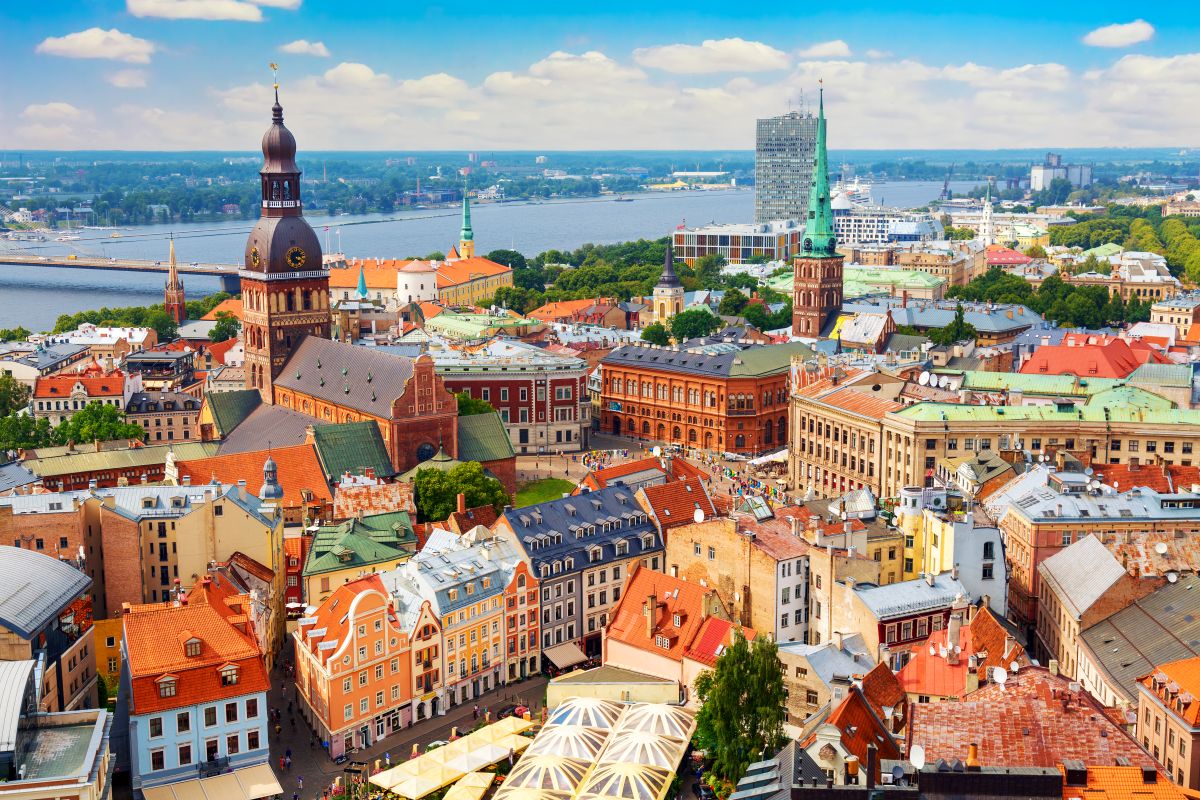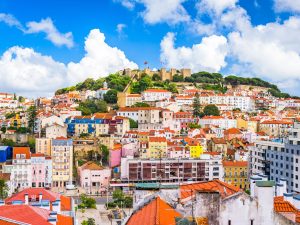Top Attractions in Riga
Riga – the largest city in the Baltics, UNESCO-protected and surprisingly green – combines a Hanseatic old town, spectacular Art Nouveau, and modern culture. Along the Daugava River, the city canal, and elegant boulevards, the highlights are conveniently close together. Perfect for a compact city trip – or a self-guided tour with plenty of short stops (coffee breaks included).
House of the Blackheads
The magnificent brick façade on Town Hall Square is Riga’s number one photo magnet. The original was destroyed during World War II; today’s building is a lovingly detailed reconstruction from the 1990s. Inside, you’ll find grand halls, city history, and changing exhibitions. In the evening, the façade is beautifully illuminated. Originally, the house served as the representative and festive headquarters of the namesake brotherhood of unmarried merchants during the Hanseatic era. Today, the vaulted cellars and treasure chambers are also open to visitors – perfect for immersing yourself in old Riga.
Fun Fact: During the renovation of Riga Castle, the Presidential Chancellery and the President worked here temporarily – conducting state affairs in the city’s most beautiful ‘ballroom’.
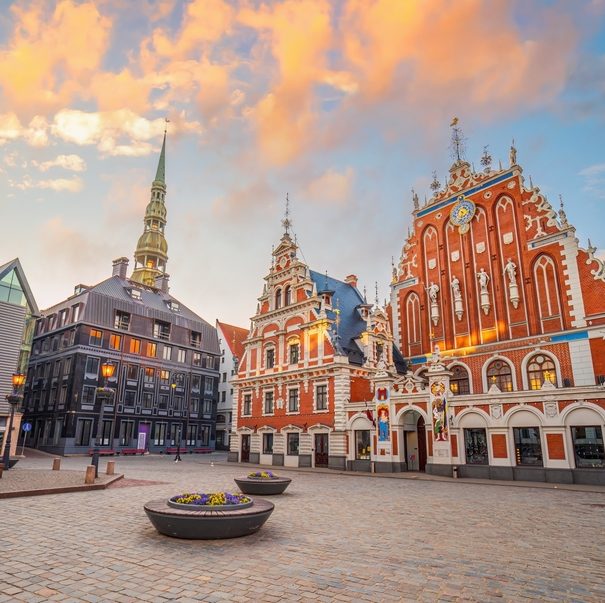
Riga Cathedral
The cathedral dominates the skyline and shapes the very sound of the city. Its famous organ fills the nave with warm, resonant tones. Around Cathedral Square, cafés, historic façades, and cobblestone streets invite you to linger. Culture enthusiasts can enjoy one of the organ recitals or evening concerts. The foundation stone was laid in 1211. The architecture combines Romanesque, Gothic, and Baroque elements with touches of Art Nouveau. Particularly atmospheric is the cloister, offering a surprisingly peaceful retreat right in the heart of the old town.
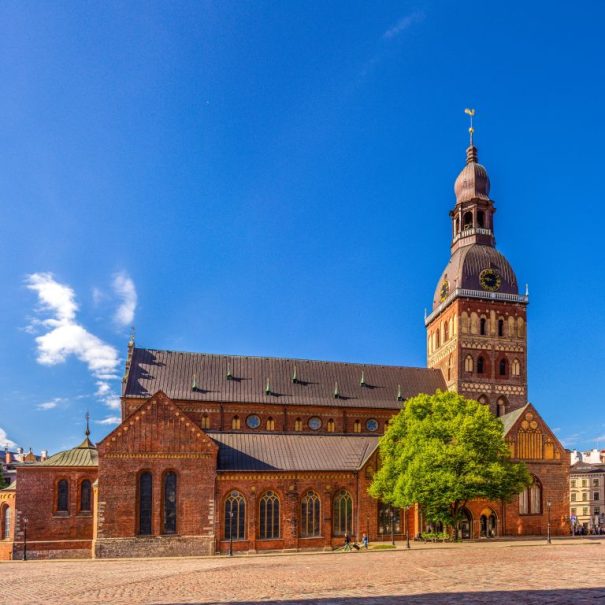
Freedom Monument
The statue of Milda raises three stars into the sky and is regarded in Latvia as a powerful symbol of freedom and independence. Located between the Old Town and the green park belt, it serves as both a popular meeting point and the perfect starting place for a city walk. The monument was inaugurated in 1935 and was created by sculptor Kārlis Zāle. At its base, the inscription Tēvzemei un Brīvībai can be read, which translates as For Fatherland and Freedom. An honor guard often stands here, adding a solemn touch to the bustling atmosphere of the city.
Fun Fact: The three stars represent the historical regions of Latvia: Kurzeme, Vidzeme, and Latgale.
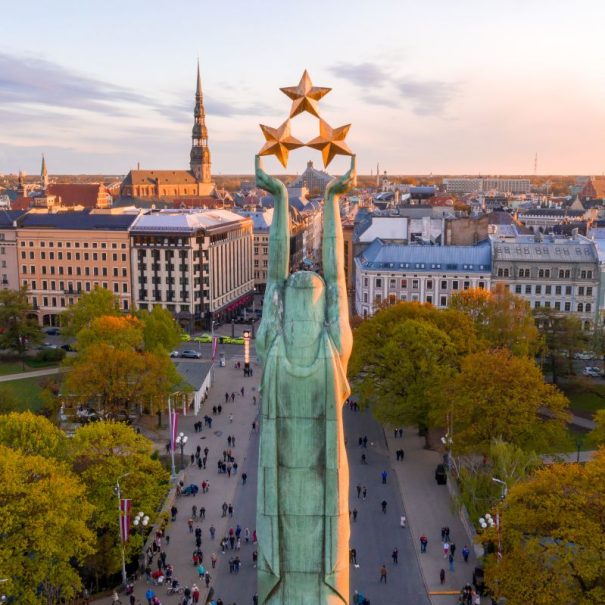
The Three Brothers
The three narrow gabled houses illustrate, in a very small space, how Riga has evolved over the centuries. Romanesque, Gothic, and Baroque elements stand side by side in harmony, telling the city’s story through their façades. The atmosphere is most peaceful in the morning, when you can take your time to admire the details. The houses are located at Mazā Pils iela 17, 19, and 21. The oldest building, painted white, dates back to the late fifteenth century, while the other two were built in the seventeenth century. Inside, you’ll find the Latvian Museum of Architecture – small, but expertly curated, and very typical of Riga.
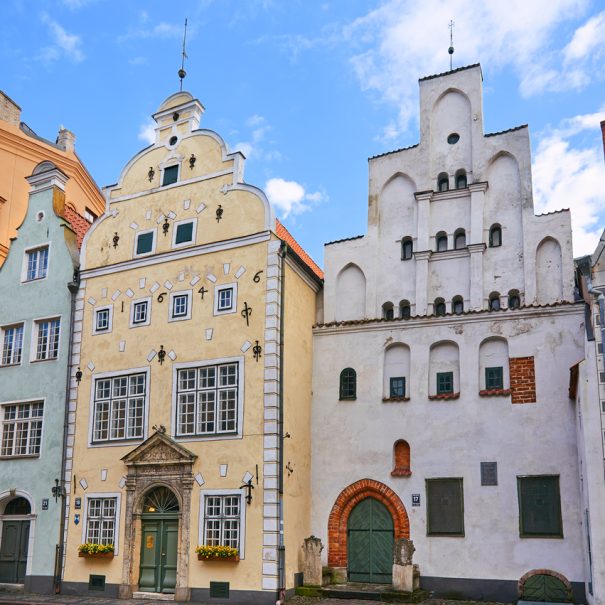
Central Market
Five large halls and countless stalls make the Central Market one of the liveliest places in the city. From smoked fish and berries to freshly baked bread, you can taste your way across Latvia. Opened in 1930, the halls are built on the foundations of former Zeppelin hangars, giving the complex its unique character. Outside, open-air sections and street food zones complete the experience. The market is part of Riga’s UNESCO-listed historic center and is often regarded as an industrial cathedral for food lovers.
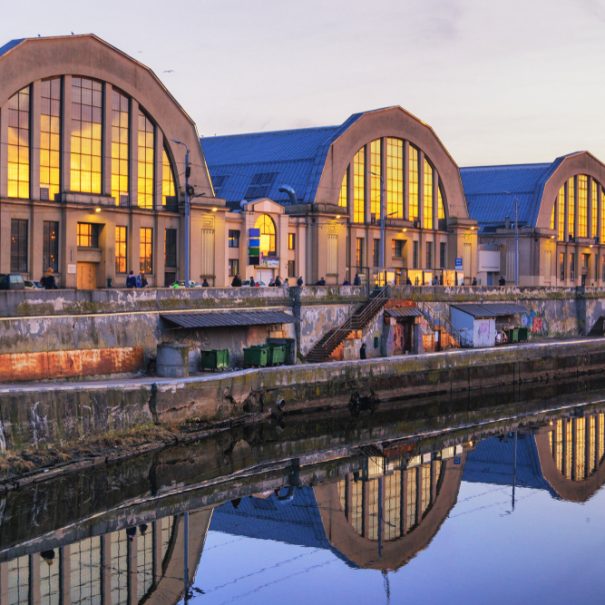
Art Nouveau district around Alberta iela
Riga is considered the capital of Art Nouveau, and Alberta iela is its most beautiful stage. Opulent façades adorned with mascarons, floral ornaments, and figures line the street and invite you to marvel. Many buildings were designed by Mikhail Eisenstein, while Konstantīns Pēkšēns and Eižens Laube also shaped the character of the district. It is not only the street views that are impressive – courtyards, staircases, and doors are often true works of art as well. A visit to the Art Nouveau Museum rounds off the walk and lets you experience the lifestyle of the era from the inside.
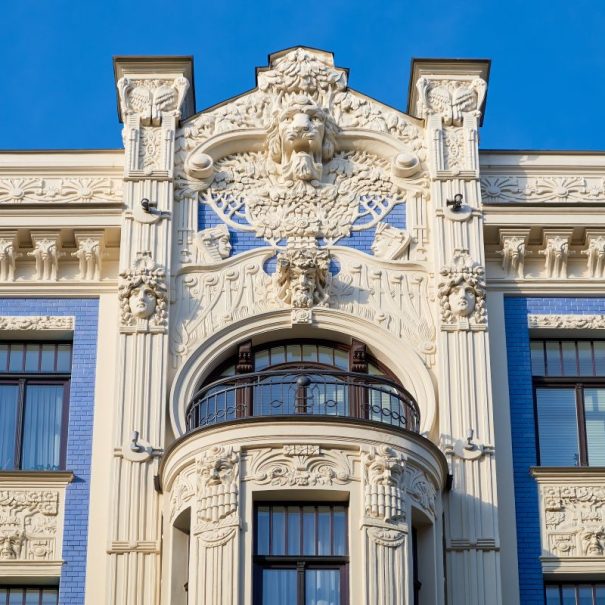
Latvian National Opera
The National Opera is picturesquely located on the city canal, combining classical elegance with a relaxed park setting. Inside, you’ll find high-quality opera and ballet performances as well as a surprisingly international program. The building dates back to the nineteenth century and offers around nine hundred to one thousand seats, with excellent acoustics and refined architecture. In summer, festivals and open-air events attract visitors. Even if you don’t attend a performance, it’s worth admiring the illuminated façade in the evening as it reflects beautifully in the canal.
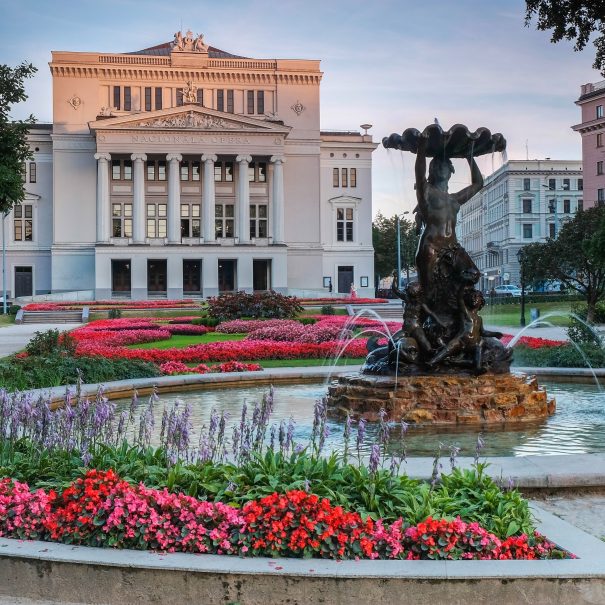
Christus Geburtskathedrale
The gilded domes of Riga’s largest Orthodox church shine above the Esplanāde and can be seen from afar. The cathedral was built between 1876 and 1884 in the Neo-Byzantine style, with architects Robert Pflug and Nikolai Chagin among those involved in the design. Inside, you will find a magnificent iconostasis, richly decorated chapels, and a calm, solemn atmosphere. During the Soviet era, the building served as a planetarium and exhibition hall, but since 1991 it has once again been consecrated and used for liturgical purposes. The cathedral is especially enchanting during the golden hour, when the domes glow warmly in the evening light.
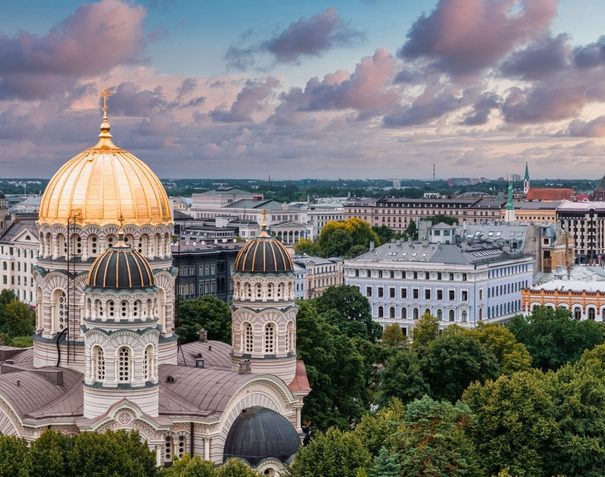
Best Scenic Viewpoints
St. Peter's Church
The classic among Riga’s viewpoints. In just a few seconds, the elevator takes you to the top, where the Old Town lies at your feet like a model railway. The view stretches from the Cathedral across the Daugava River all the way to the TV tower, and it’s especially atmospheric at dusk. It can be windy at the top, so it’s best to bring a light jacket. Early birds have the best chance of avoiding long lines and finding an open spot at the railing.
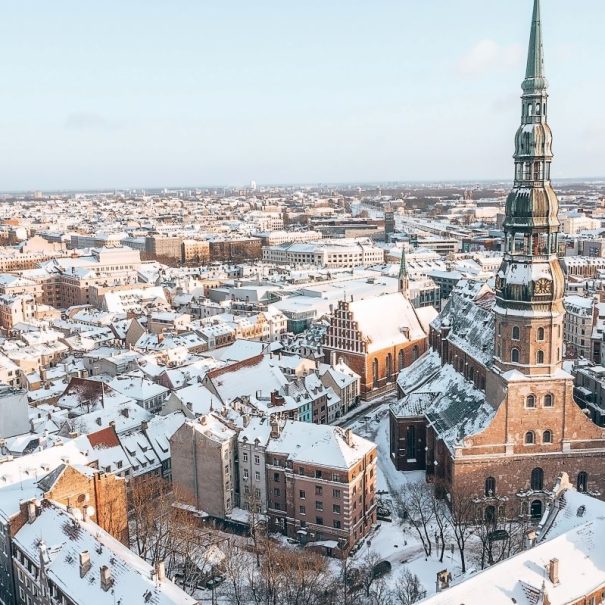
Skyline Bar at the Radisson Blu Latvija
Here you can pair stunning views with a drink as you look out from the 26th floor over parks, boulevards, and the Daugava River. After sunset, the city begins to sparkle, and the wide windows turn into the perfect stage for the evening. If you want a seat by the glass, it’s best to come a little earlier or make a reservation. The atmosphere is relaxed, making it ideal for a stylish aperitif or winding down after a day of sightseeing. A final tip: share a signature cocktail and the view—both taste even better in good company.
Latvian Academy of Sciences
At around 65 meters in height, a 360-degree panoramic view opens up before you. At your feet lie the Zeppelin halls of the Central Market, with church towers, the river, and the harbor stretching out behind them. The building itself is a typical example of the Stalinist “wedding-cake” style and already a striking photo motif from the outside. The ascent is easy via an elevator and a few final steps, making the platform ideal even if you’re short on time. During the golden hour, the façades are bathed in warm light, creating photos that hardly need any editing.
Fun Fact: Locals often refer to the building as Stalin’s birthday cake, a tongue-in-cheek reference to its monumental 1950s architecture.

Culinary Highlights For Food Lovers
3 Pavāru Restorāns (Three Chefs)
Modern Latvian cuisine meets playful presentation at the table. Colorful sauce paintings are created directly on the paper, and you enjoy a multi-course journey through the seasons. Most ingredients come from the region, and the open kitchen creates a sense of closeness to the team. The atmosphere is elegant yet relaxed, making it ideal for a special dinner with a touch of surprise. Reservations are especially worthwhile in the evening, as seats are in high demand.
Folkklubs Ala Pagrabs
This vaulted cellar in the old town feels like Riga’s cozy living room. Between brick walls and candlelight, you’ll find live music on many evenings and a wide selection of Latvian beers on tap. The menu focuses on hearty, down-to-earth dishes served in generous portions – perfect after a day of exploring the city. At the long wooden tables, it’s easy to strike up a conversation with locals and fellow travelers. And if you feel like dancing, just stay a little longer.
Rocket Bean Roastery
The in-house roastery captures the essence of specialty coffee, noticeable from the aroma as soon as you step through the door. In the bright space, the team serves excellent espressos and precisely brewed filter coffee, accompanied by a hearty breakfast. Baristas are happy to explain the origins of the beans and suggest the best brewing method for home. Many guests come here to work or read, as the atmosphere is calm and welcoming. If you love coffee, you’ll quickly become a regular.
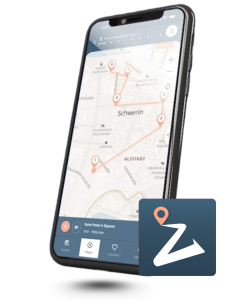
Discover 70+ cities worldwide with professional audio guides – and counting! Thanks to integrated navigation, you’ll easily find your way, even without an internet connection. Whether it’s famous highlights or hidden gems – Plazes brings exciting tours and vivid stories straight to your smartphone. Completely free and no registration required. Download now and get started!
Insider Tips & Hidden Gems
Kalnciema Quarter
Lovingly restored wooden villas with small courtyards showcase Riga’s charming local side. On weekends, a lively market fills the courtyards with handicrafts, fruit, flowers, and regional street food. Live music and small workshops are often part of the atmosphere, making the visit especially enjoyable for families. The district is located on the Pārdaugava side in a quiet neighborhood and is perfect for a relaxed stroll away from the Old Town.
Fun Fact: The complex was originally designed so that sunlight, fresh air, and art would all contribute to healing – essentially a Mediterranean wellness cure on prescription. No wonder the hospital is now listed as a UNESCO World Heritage Site.
Spīķeri Quarter and Daugava Promenade
Former brick warehouses have been transformed into a creative district with galleries, studios, and event spaces. Along the promenade, you can stroll by the water while enjoying views of bridges, the national library, and the old town skyline. In summer, open-air events and flea markets bring the riverfront to life, and the area offers plenty of great photo spots at sunset. Cafés and seating steps invite you to take a break before continuing your walk along the river.
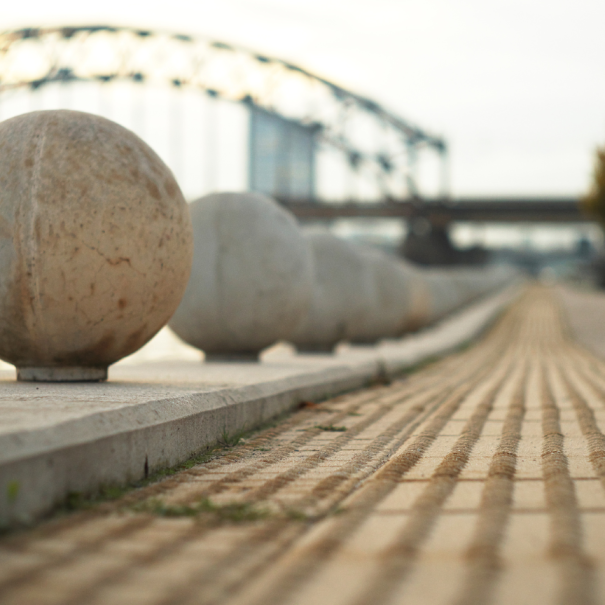
Zuzeum Art Centre
Housed in a former industrial building, the Zuzeum showcases changing exhibitions of contemporary art from Latvia and around the world. The quiet courtyard with its café and sculpture area makes it a pleasant place to linger. Guided tours, talks, and workshops provide easy access to the art. Design lovers will also find special books and small editions in the shop as memorable souvenirs.
Museums for Culture and History Enthusiasts
Museum of the Occupation of Latvia
This museum offers a powerful journey through the years 1940 to 1991, illustrating how occupation and dictatorship shaped everyday life. Original letters, photographs, and personal belongings make history tangible and emotional. Audio guides in several languages provide context and additional background. Its central location in the old town makes it easy to plan a visit alongside other highlights. Take your time – the exhibition opens up many perspectives and invites reflection.
Ethnographic Open-Air Museum of Latvia
On the shore of Lake Jugla, an open-air museum awaits with more than a hundred historic wooden buildings from all regions of Latvia. Farmsteads, windmills, and small chapels, mostly dating from the 17th to the 20th century, are lovingly preserved and furnished. On many days, craftsmen and women demonstrate traditional techniques ranging from weaving to blacksmithing. In summer, festivals and markets take place, filling the air with the scent of freshly baked bread and resin from the forest. Thanks to its peaceful location, the site offers both a welcome escape from the bustle of the city and a journey into the country’s rural culture.
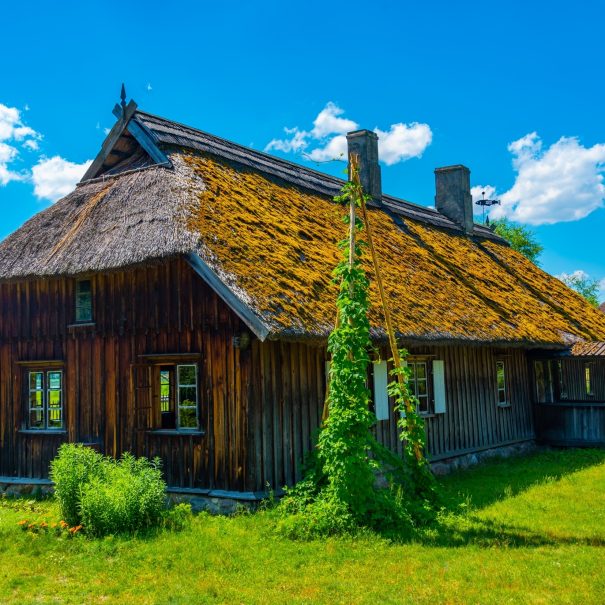
Latvian National Museum of Art
In this beautifully renovated building, you can experience Latvian art from the 18th century to the present day. The modern layout makes the tour pleasantly clear and easy to navigate, helping you quickly connect with painting, graphic art, and sculpture. Particularly striking are the bright atrium and the richly detailed staircases, which are works of art in themselves. From the rooftop terrace, you can enjoy sweeping views over the city’s boulevards and parks. Changing exhibitions ensure that a second visit is just as rewarding.
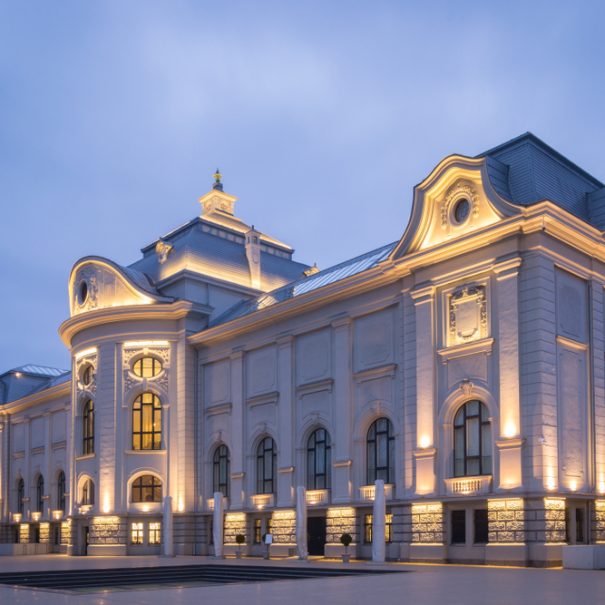
Shopping & Souvenirs
Riga is a paradise for unique souvenirs and authentic craftsmanship. Amber, fine linen, sturdy ceramics, and the famous Laima chocolate are especially popular. In the winding alleys of the Old Town, you’ll find small boutiques with lovingly curated selections, while Galerija Centrs offers a good mix of international brands and local labels. Design lovers will also enjoy strolling through the historic Berga Bazars and browsing stylish concept stores. For edible souvenirs, the Central Market is a must – with fragrant bread, berries, cheese, honey, and smoked fish waiting to be discovered.
On Saturdays, it’s worth making a detour to the Kalnciema Quarter. Between restored wooden villas, you’ll find a vibrant market featuring handicrafts, natural cosmetics, and regional street food. Seasonal markets complement the offer throughout the year, such as the winter market on Cathedral Square with lots of handmade goods and hot punch. Another great spot is the renovated Āgenskalns Market, which has a more local and relaxed atmosphere.
As a liquid souvenir, Riga Black Balsam makes a great choice – the city’s famous dark herbal specialty. Payment is easy with card almost everywhere, though a little cash can be handy at markets. And if your suitcase is already full, don’t worry – there’s always room left for some chocolate.
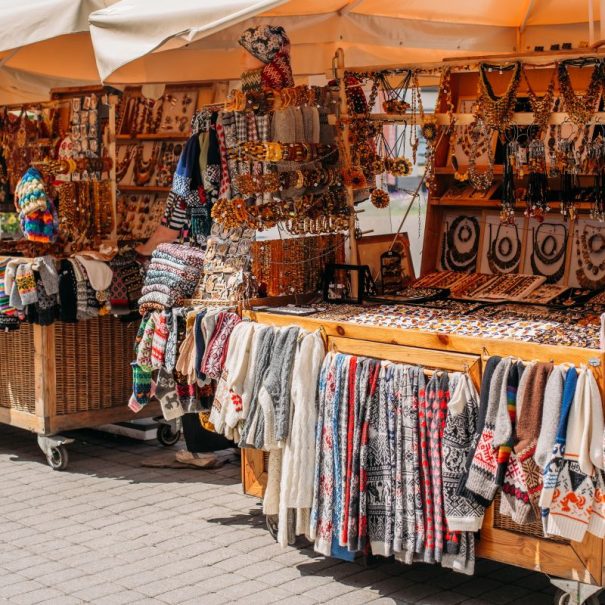
Fotospots in Riga
City Hall Square
In the blue hour, the richly decorated façade glows like a stage, giving the square an almost festive atmosphere. The House of the Blackheads is a faithful reconstruction from the 1990s and recalls the traditions of Hanseatic merchants. All around, the town hall and historic gabled houses frame the scene, giving the square its distinctive shape. In summer, street music and small events bring the space to life, while in winter festive lights create a special ambiance.
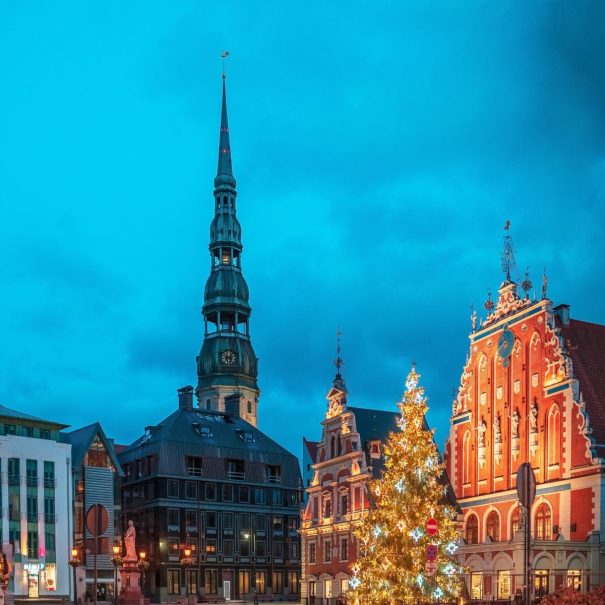
Bastejkalns Park
The city canal winds like a green ribbon through the center, following the old fortress moat. Small bridges, lawns, and rows of trees create a peaceful oasis right next to the historic old town. Excursion boats glide past on the water, while the opera house rises on the opposite side as an elegant focal point. In spring, flower beds and chestnut trees bloom; in autumn, the avenues turn golden and the walking paths become the most beautiful route between two appointments.
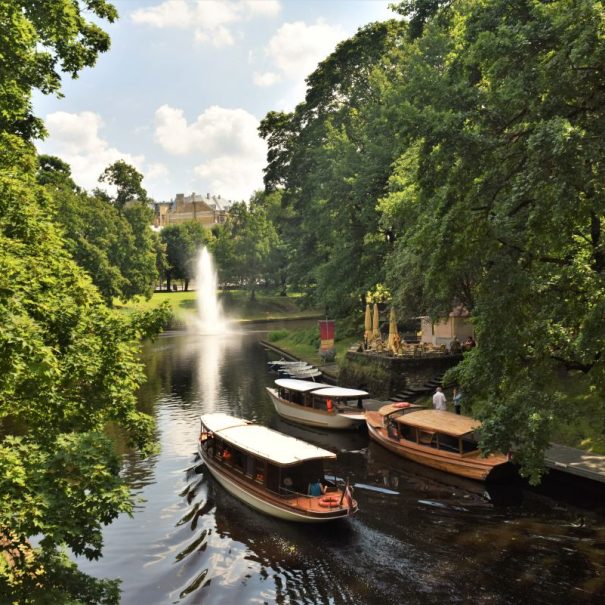
Tips for Cruise Passengers
Most ships dock at the Riga Passenger Port, and the walk into the Old Town is pleasantly short. Depending on the pier, it takes about fifteen to twenty-five minutes on foot—though with flip-flops, the cobblestones feel more like a workout than a runway. A more comfortable option is to take a taxi or a Bolt, which gets you to Dome Square in just a few minutes, leaving you only one decision on the way: coffee first or photos?
If you prefer to be in control of your journey, take public transport. Within just a few minutes’ walk you’ll find stops for trams, buses, or trolleybuses that run frequently through the city. The most convenient option is the e-Talons card, available as a single ride, day pass, or multi-day ticket. Simply hold it to the reader when boarding, and your trip is booked. This way, you can combine a short walk with a quick tram ride and reach the Central Market or St. Peter’s Church in no time.
Free Wi-Fi in many cafés and museums, as well as the widespread use of card payments in Latvia, make traveling especially convenient. If you need to store your belongings, lockers are available at the central train station. For up-to-date information on events and opening hours, it’s worth checking the official LiveRiga Tourist Information.
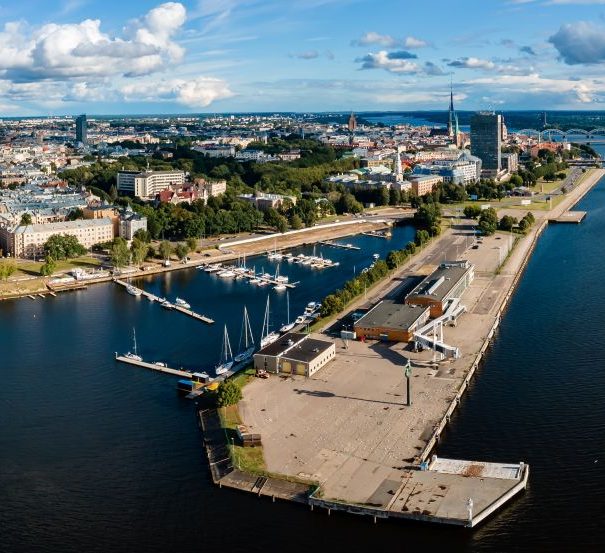
Tips for Solo Travelers
Riga is vibrant, compact, and perfect for solo travel. The city is well connected by public transport, with buses, trams, and trolleybuses running frequently to take you quickly to the main districts. Many routes are easy to cover on foot. A particularly lovely walk leads along the city canal through Bastejkalna Park and continues to the banks of the Daugava River. In the Old Town, small squares and cafés invite you to take a break, and thanks to the short distances you can leisurely stroll from one highlight to the next.
A good first stop is the Tourist Information Center at Town Hall Square. There you can pick up city maps, get the latest event tips, and find suggestions for easy walking routes. If you enjoy meeting people while traveling, you’ll find connections in coworking spaces such as Teikums or Workland Telegraph, as well as in cafés like MiiT Coffee. Many meetups and hobby groups are organized through local Meetup communities. Language cafés, running groups along the Daugava, and photo walks through the Old Town are popular activities where conversations start naturally.
In the evening, you can choose between cozy and social. At the Skyline Bar, enjoy city views with a drink in hand. Folkklubs Ala Pagrabs offers live music, long wooden tables, and a friendly mix of locals and travelers. Beer enthusiasts will feel at home at Labietis or the Valmiermuiža Embassy. If you don’t want to dine alone, food halls and traditional spots like Lido with their large tables are a great option. Many hostels host quiz nights, cooking sessions, or communal bar-hopping events that are also open to outside guests.
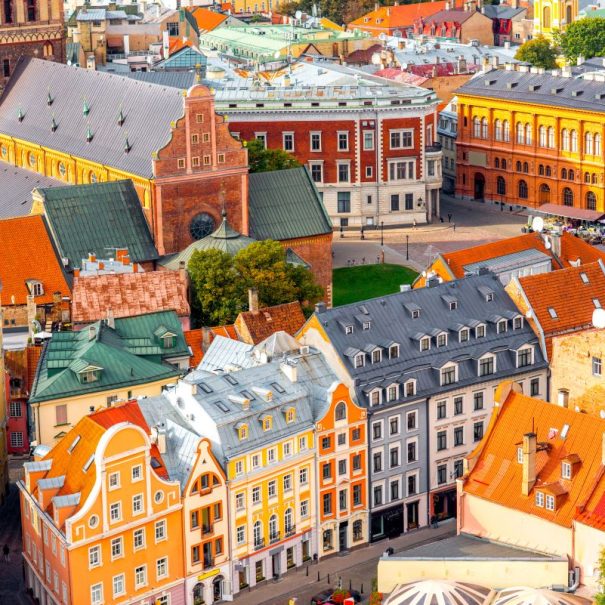
Conclusion
Riga combines Hanseatic history with creative modern life – all within short walking distances. Between the cobblestones of the Old Town, golden domes, Art Nouveau façades, and the quiet greenery along the city canal, you’ll discover new perspectives at every turn. The view from St. Peter’s Church, a stroll through the Central Market, and a walk along the banks of the Daugava reveal just how diverse the city is. Museums vividly showcase art and history, cafés and restaurants invite you to take enjoyable breaks, and in the evening, squares and façades glow in warm light. Whether as a shore excursion for cruise travelers or a city trip for solo adventurers, Riga is compact, welcoming, and well connected. Those who want to explore the city independently will find ideal conditions for moving from highlight to highlight. In the end, you’re left with the feeling of having experienced a great deal in a short time – and still looking forward to coming back.
FAQs
1. Do you need a public transport flat rate in Riga, or are single tickets enough?
For a short city trip, single tickets or a 24-hour pass are usually sufficient. If you travel more frequently or go beyond the old town, a day ticket is worthwhile. Tickets are available from vending machines, kiosks, and via the Rīgas satiksme app.
2. What is the best market to visit if the Central Market is too crowded?
The Āgenskalns Market on the other side of the Daugava has been freshly renovated and offers a much more local experience. On Saturdays, the Kalnciema Quarter is also worth a visit, with its market stalls set among historic wooden houses.
3. Which season is ideal for visiting Riga?
From May to September, long days, lush greenery, and lively terrace life set the tone. Winter is cold, but the Advent season and snow often create a very atmospheric old town. In spring and autumn, things are quieter and more affordable.
4. Is Riga safe, and what should travelers be aware of?
Riga is considered relatively safe. As in any major city, it’s important to stay alert in busy areas such as the Old Town, the Central Market, and on public transport. Keep valuables close to your body and use well-lit paths at night.
5. How much time should be planned for the main sights?
Allow about 45 minutes for St. Peter’s Church with the tower climb, and 45 to 60 minutes for the House of the Blackheads. The tour inside the cathedral takes 30 to 45 minutes. For the Central Market, plan at least one hour, or better two if you want to sample local foods. A walk along Alberta iela and through the Art Nouveau district takes around 45 to 60 minutes.

